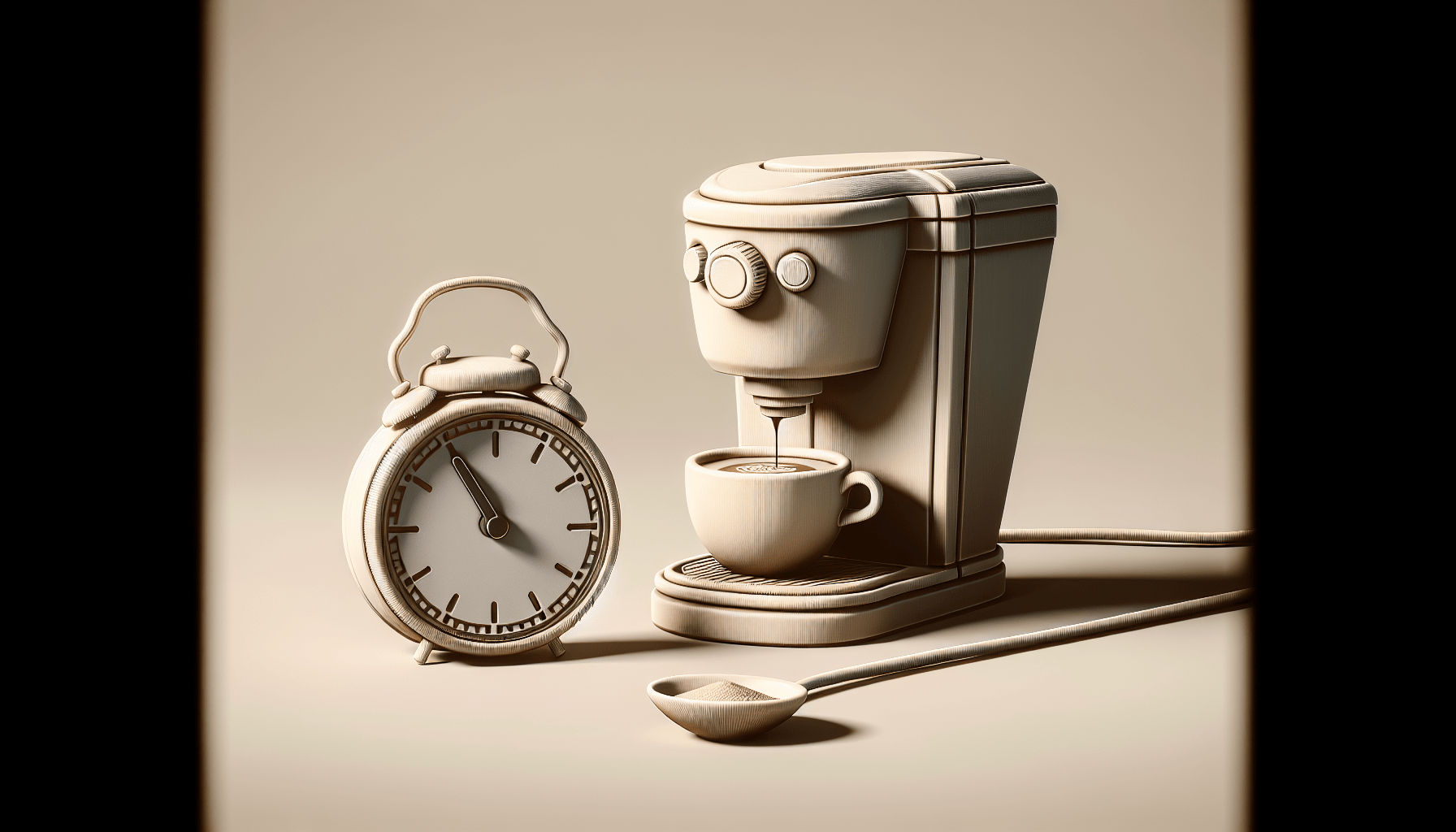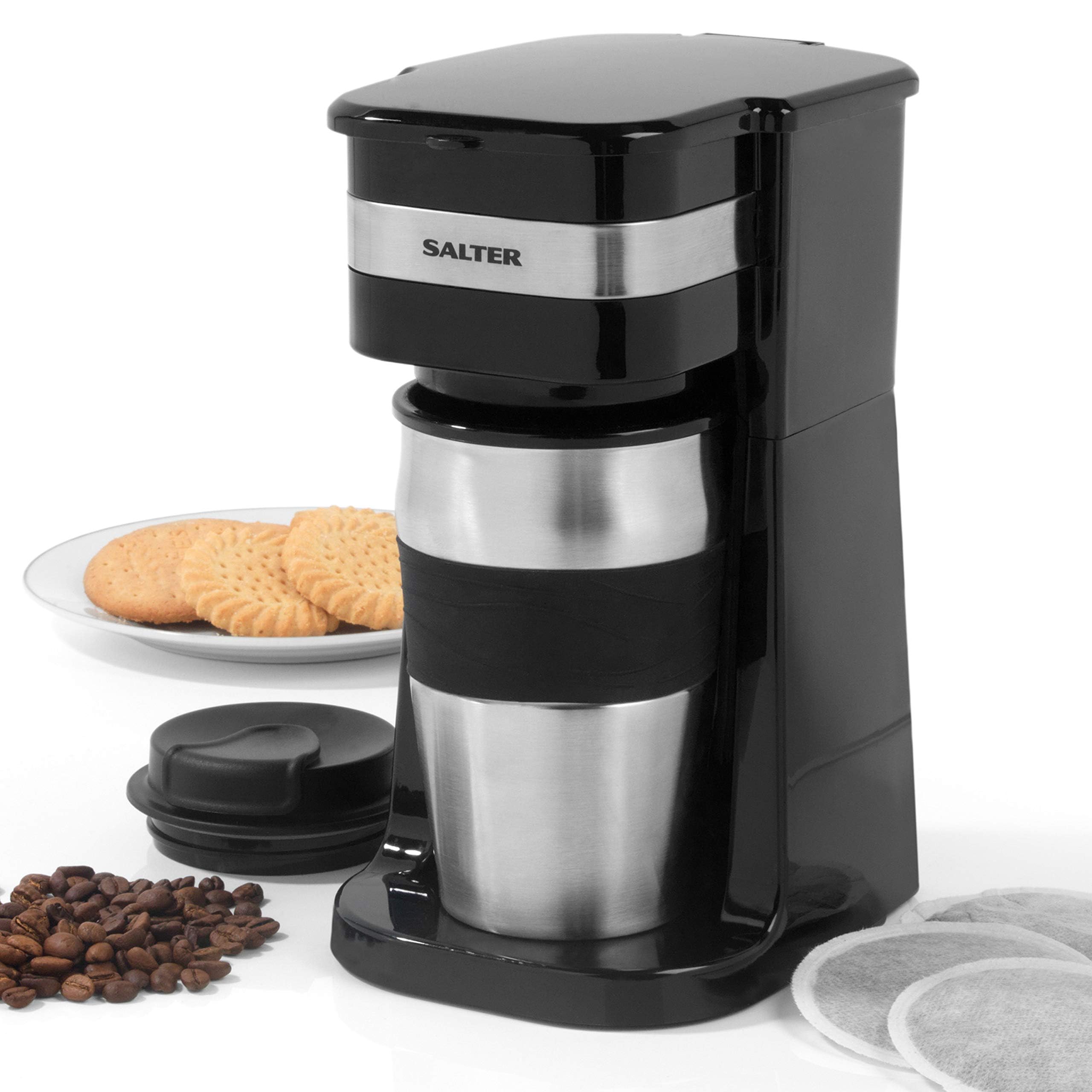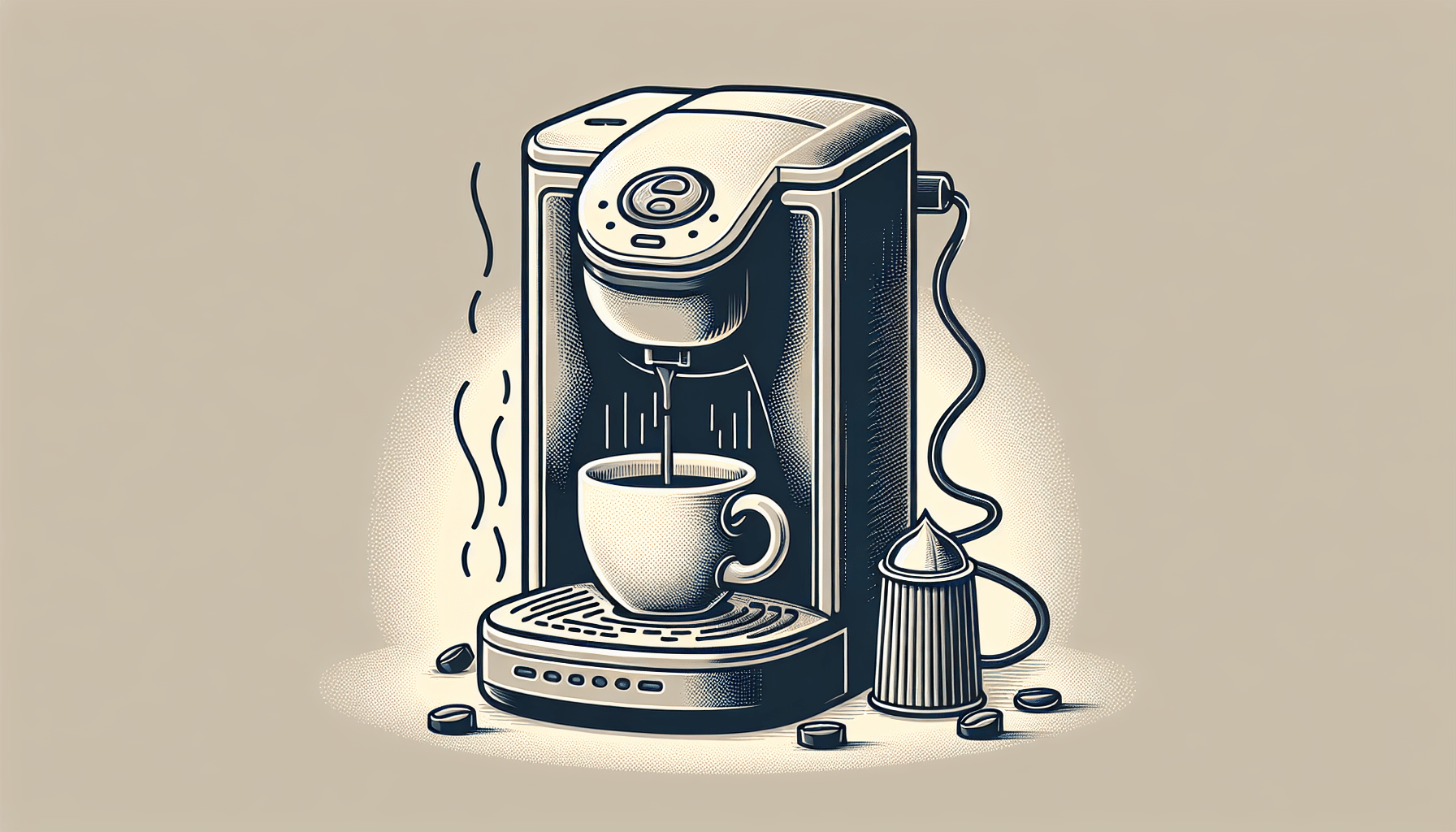Have you ever found yourself rushing in the morning, desperately waiting for your coffee to brew? If so, you may have wondered just how long it takes for a single-serve coffee maker to deliver that much-needed cup of java. Well, wonder no more! In this article, we will explore the average brewing time of single-serve coffee makers and provide you with some helpful tips to ensure you never have to wait too long for that perfect cup of coffee again. So grab your favorite mug and get ready to discover the ultimate coffee brewing time!
Factors influencing brewing time
When it comes to brewing a perfect cup of coffee with a single-serve coffee maker, several factors come into play that can influence the brewing time. Understanding these factors is essential for optimizing the coffee-making process and achieving the desired taste and quality in your cup of joe. Let’s delve into each of these factors and explore their impact on brewing time.
Water temperature
Water temperature plays a crucial role in the brewing process, as it determines the rate at which the coffee grounds release their flavors and aromas. The ideal water temperature can vary depending on personal preference and the type of coffee being brewed. Generally, the optimal water temperature for coffee extraction falls within the range of 195°F to 205°F (90°C to 96°C).
Impact of water temperature on brewing time
The water temperature directly affects the extraction speed of the coffee, meaning that hotter water often results in a faster extraction. However, brewing at excessively high temperatures can lead to over-extraction and bitter-tasting coffee. On the other hand, using water that is too cold may result in under-extraction and a weak, flavorless brew. Therefore, finding the right balance and maintaining a consistent water temperature is important for achieving optimal brewing time and flavor.
Ideal water temperature for brewing coffee
Based on expert recommendations, aiming for a water temperature between 195°F and 205°F (90°C to 96°C) is a good starting point for most coffee brewing methods. However, it’s worth noting that certain brewing methods, such as cold brew, require lower water temperatures and longer extraction times for a smooth and mellow flavor profile. Experimenting with different water temperatures can help you discover your preferred brewing time and the perfect balance of flavors.
Coffee grind size
The size of your coffee grounds significantly impacts the brewing time and the overall taste of your coffee. The grind size determines the surface area and the rate at which water can extract flavor from the coffee particles. Choosing the right grind size is crucial to achieve a well-balanced cup of joe.
Impact of grind size on brewing time
Different brewing methods require specific grind sizes to optimize the extraction process. Generally, a finer grind size accelerates the extraction process, resulting in a shorter brewing time. Conversely, a coarser grind size slows the extraction rate, leading to a longer brewing time. Finding the optimal grind size for your single-serve coffee maker is key to achieving consistent and flavorful brews.
Optimal grind size for single-serve coffee makers
For most single-serve coffee makers, a medium grind size similar to table salt is often recommended. This grind size strikes a balance between extraction speed and flavor extraction, resulting in a well-rounded cup of coffee. However, it’s important to consult your specific coffee maker’s user manual or experiment with different grind sizes to find the one that suits your taste preferences and brewing time.
Coffee-to-Water ratio
The coffee-to-water ratio represents the amount of coffee grounds in proportion to the water used during brewing. This ratio greatly influences the strength, flavor, and brewing time of your coffee. Achieving the right balance between coffee and water is key to a delicious cup.
Importance of coffee-to-water ratio in brewing time
The coffee-to-water ratio directly affects the extraction process, as it determines the concentration of soluble compounds in the final cup. A higher coffee-to-water ratio leads to a stronger brew and a shorter brewing time, while a lower ratio results in a milder cup and a longer brewing time. Adjusting the ratio allows you to customize the intensity of your coffee and tailor the brewing time to your liking.
Recommended coffee-to-water ratio for single-serve coffee makers
While the ideal coffee-to-water ratio can depend on personal preference, a common recommendation for single-serve coffee makers is using approximately 1 to 2 tablespoons of coffee grounds per 6-ounce (177 mL) cup of water. However, feel free to experiment and adjust the ratio to find the perfect balance of flavors and brewing time that matches your taste buds.
Brewing method
The brewing method you choose can significantly impact the brewing time and the overall taste and quality of your coffee. Different methods employ distinct techniques to extract flavors and aromas from the coffee grounds, resulting in variations in brewing time.
Differences in brewing time between drip and pressure methods
Drip brewing methods, such as pour-over and drip machines, typically have longer brewing times compared to pressure-based methods like espresso machines. This is because drip methods rely on gravity to slowly extract the flavors, allowing for a more thorough extraction process. Pressure-based methods, on the other hand, utilize higher pressure to force water through the coffee grounds, resulting in a shorter brewing time.
Impact of brewing method on taste and quality of coffee
The brewing method you choose can greatly influence the taste and quality of your coffee. Drip methods often create a smoother, well-rounded flavor profile, while pressure-based methods tend to produce a more concentrated and robust cup. Additionally, the brewing method can affect the aroma, acidity, and body of the coffee. Exploring different brewing methods can help you discover your preferred taste profile and brewing time.
Machine type
The type of single-serve coffee maker you use can also impact the brewing time. Various machine types offer different features and brewing mechanisms, resulting in variations in the time it takes to brew a cup of coffee.
Variations in brewing time among different single-serve coffee makers
Different single-serve coffee makers have unique brewing mechanisms that can affect the brewing time. Some machines utilize advanced technologies, such as rapid heating systems or pre-infusion, which can shorten the brewing time. Conversely, manual brewing devices may require more time and attention. Understanding the specific capabilities of your coffee maker can help you manage brewing time effectively.
Factors influencing brewing time in different machine types
Apart from the inherent design and features of the coffee maker, other factors such as the water temperature control, extraction method, and the efficiency of the machine’s heating element can affect the brewing time. Always refer to the user manual of your specific machine to understand its optimal brewing time and how to make adjustments if desired.
Notable machine types and their brewing time
While the brewing time can vary among different single-serve coffee makers, some notable machine types with varying brewing times include pod-based systems like Keurig, which generally offer faster brewing times, and espresso machines, which are known for their relatively shorter brewing times due to high-pressure extraction. Understanding the characteristics and brewing time of different machine types can help you choose the one that aligns with your preferences.
Standard brewing time range
The brewing time of single-serve coffee makers can vary depending on various factors. However, considering the average brewing time range can provide a guideline to ensure a satisfactory brewing experience.
Average brewing time for single-serve coffee makers
On average, the brewing time for single-serve coffee makers falls within the range of approximately 1 to 3 minutes. However, keep in mind that this is a general estimation and can vary based on the specific factors mentioned earlier.
Range of brewing time based on different factors
Factors like water temperature, coffee grind size, coffee-to-water ratio, brewing method, and machine type can influence the brewing time and result in variations. By adjusting these variables, you can customize your brewing time within the estimated range to achieve your desired flavor and strength.
Speed-enhancing features
Some single-serve coffee makers come equipped with speed-enhancing features designed to reduce brewing time without compromising on the quality of the coffee. These features aim to provide a quick and convenient brewing experience for those who value efficiency.
Features that reduce brewing time in certain single-serve coffee makers
Speed-enhancing features can include rapid heating systems, pre-infusion capabilities, or specialized brewing technology that speeds up the extraction process. These features minimize the time required for brewing without sacrificing the flavor and aroma of the coffee.
Impact of these features on coffee quality
While speed-enhancing features can reduce brewing time, it’s important to note that the impact on coffee quality may vary. Some machines with these features maintain the integrity of the coffee flavor, while others may compromise the taste due to a faster extraction process. Consider experimenting with different machines and reading user reviews to understand the impact these features have on the quality of the final cup.
Popular single-serve coffee makers with speed-enhancing features
Several popular single-serve coffee makers in the market offer speed-enhancing features. Examples include Keurig coffee makers, which utilize pod-based brewing systems to expedite the brewing time, as well as certain espresso machines that feature fast heat-up capabilities and high-pressure extraction. Exploring these options can help you find a coffee maker that aligns with your desired brewing time and coffee quality.
Factors affecting overall time from start to finish
While the brewing time is a significant factor in the overall coffee-making process, other elements also contribute to the time it takes to go from starting to enjoy your cup of coffee.
Preheating time
Certain coffee makers may require a preheating period before brewing, during which the machine reaches the desired temperature. This preheating time can extend the overall brewing process. Understanding and accounting for this time can help you plan and manage your coffee-making routine efficiently.
Coffee preparation time
Preparing the coffee grounds, measuring the coffee-to-water ratio, and ensuring the machine is clean and ready can also add to the overall coffee-making time. However, investing time in these preparations can lead to better results and a more enjoyable coffee experience.
Cleaning and maintenance time
After brewing your coffee, cleaning and maintaining your coffee maker are essential steps for ensuring longevity and maintaining optimal performance. This extra time spent on cleaning and maintenance should be considered in your overall coffee-making routine.
Conclusion
Various factors come into play when determining the brewing time of single-serve coffee makers. Water temperature, coffee grind size, coffee-to-water ratio, brewing method, and machine type all have a significant impact on the time it takes to brew a perfect cup of coffee. By understanding these factors and making adjustments based on personal preferences, you can optimize the coffee-making process to achieve the desired flavor, strength, and brewing time. Remember, brewing coffee is a delightful process that allows for customization, and by experimenting and exploring the world of coffee, you can unlock new levels of satisfaction in your cup of joe. Cheers to your brewing adventures!



